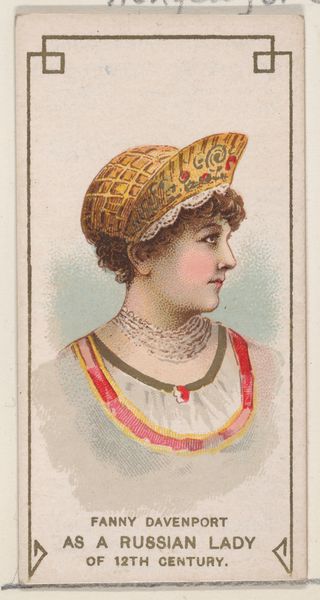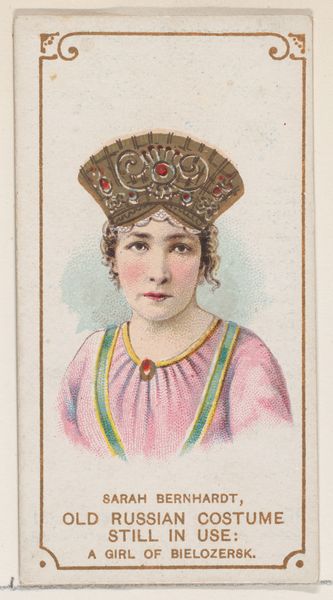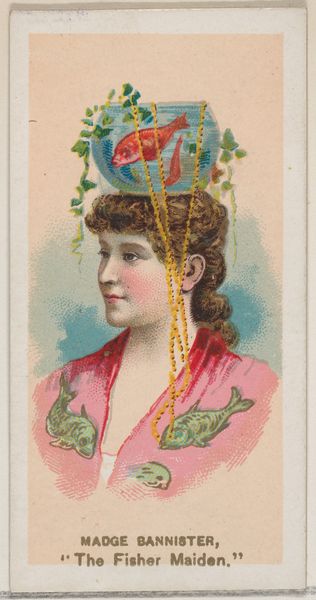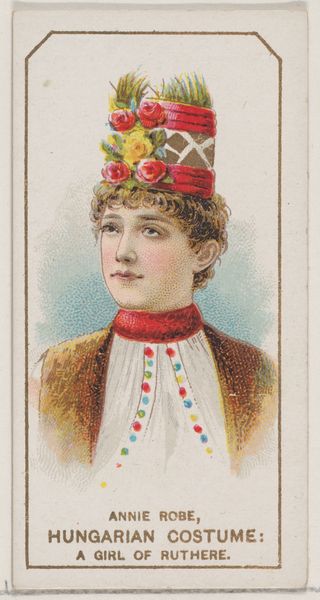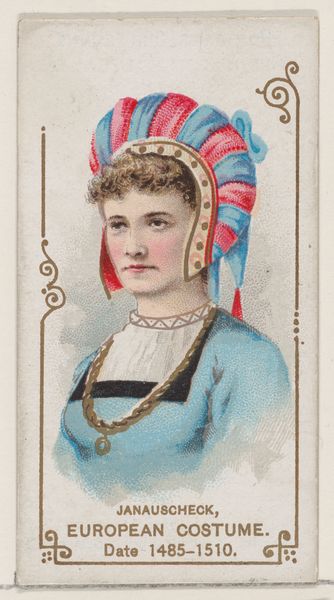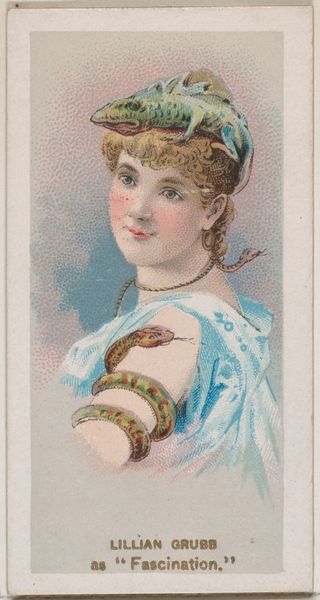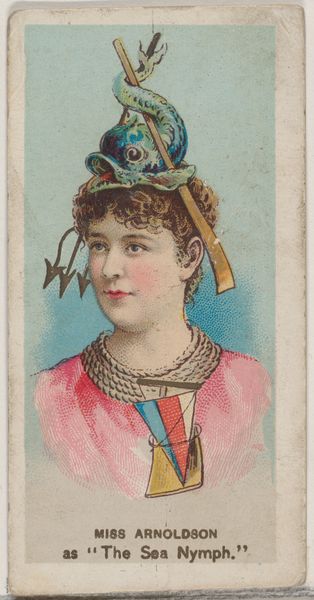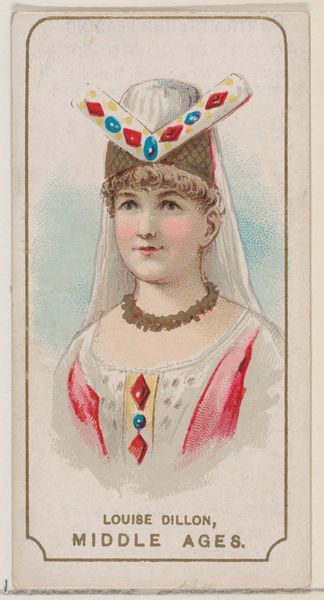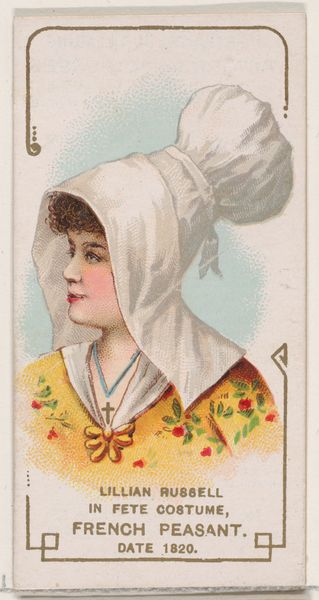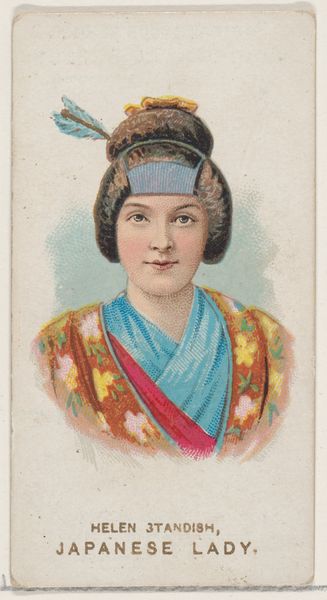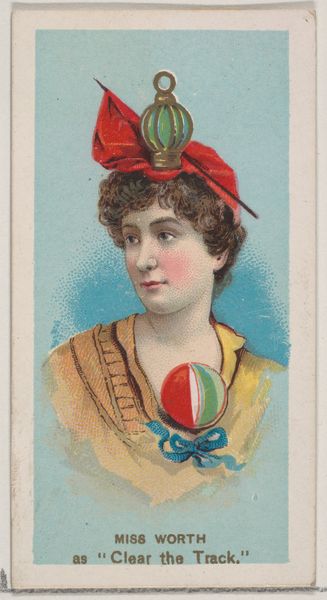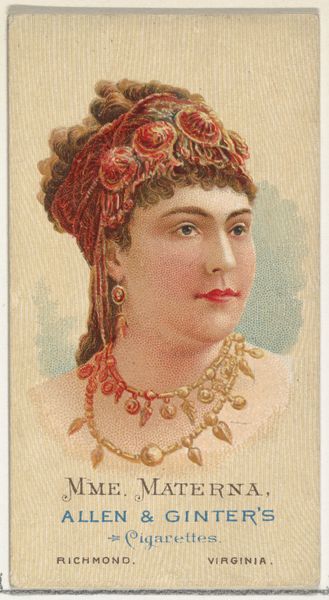
Leslie Chester Dressed as Musselman Lady of Smyrna, Turkey, from the set Actors and Actresses, Second Series (N71) for Duke brand cigarettes 1888 - 1890
0:00
0:00
Dimensions: Sheet: 2 3/4 x 1 1/2 in. (7 x 3.8 cm)
Copyright: Public Domain
Editor: Here we have "Leslie Chester Dressed as Musselman Lady of Smyrna, Turkey," a print created between 1888 and 1890 by W. Duke, Sons & Co. using colored pencil. The sitter’s gaze is quite captivating. What stands out to you about the composition? Curator: The piece excels in its formal structure. Consider the stark contrast between the ornate costume and the flat background, a juxtaposition that enhances the two-dimensionality inherent in the print medium. The tight framing, too, concentrates our visual field onto the sitter’s expression. Editor: It's interesting how the decorative elements—the floral patterns and the jeweled headdress—seem almost flattened, reinforcing that sense of two-dimensionality. But why do you think this approach was chosen? Curator: Precisely! It invites us to think about the signs that make up this woman and how they might refer us to her social position. The application of color, primarily pastels, and the limited shading create a somewhat detached depiction of texture and form. These stylistic choices allow viewers to focus on line and color. The strategic arrangement of colors directs the observer’s eye through the image and draws attention to specific elements of importance, namely the gaze. How does this impact your reading of the print? Editor: I see it creates a heightened focus on the interplay of cultural representation and aesthetic technique, diverting the narrative away from her own presence as an individual. Curator: An astute observation. It reminds us that art objects often reveal more about their creators' intentions and historical contexts than their ostensible subjects. The formal components here serve not just as elements of style, but as powerful carriers of meaning. Editor: It’s almost like the portrait is a stage, highlighting the visual language of cultural identity through form and color. This really made me think differently about how an artist's choices affect our interpretation. Curator: Indeed! A close formal analysis brings the historical context to the forefront by revealing the underlying structure.
Comments
No comments
Be the first to comment and join the conversation on the ultimate creative platform.
